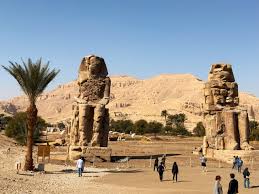Valley of the Kings, Egypt
🏺 Valley of the Kings, Egypt – Where Pharaohs Rest and Legends Live
The Valley of the Kings in Luxor, Egypt, is one of the world’s most iconic and historically rich archaeological sites. Hidden in the sun-scorched cliffs on the west bank of the Nile River, this necropolis served as the final resting place for the pharaohs and powerful nobles of the New Kingdom (16th–11th century BC). With its ornate tombs, mystical hieroglyphs, and the world-famous tomb of Tutankhamun, the valley offers a journey back in time to the grandeur and mystery of ancient Egypt.
🏛️ Top Highlights of the Valley of the Kings
1. Tomb of Tutankhamun (KV62)
The most famous tomb in the valley belongs to the boy king Tutankhamun. Though modest in size, it is remarkable for its historical significance and the stunning treasures that were found within—now mostly displayed in the Grand Egyptian Museum in Cairo. Visitors can still see the mummified remains of the young pharaoh and some original wall paintings.
-
Why Visit?: This is the only tomb discovered largely intact in the valley, revealing untold riches and sparking global fascination.
2. Tomb of Ramses VI (KV9)
This tomb is known for its exceptionally preserved ceiling art, including the magnificent astronomical depictions from the Book of the Day and the Book of the Night. Its grandeur and scale reflect the power of Ramses VI and the artistry of ancient Egyptian craftsmen.
-
Why Visit?: A visually stunning tomb with deep symbolic meaning and intricate wall carvings.
3. Tomb of Seti I (KV17)
Among the longest and most elaborately decorated tombs in the valley, the tomb of Seti I is a masterpiece of ancient architecture and funerary art. Although fragile and not always open to the public, when accessible, it’s a highlight for serious history enthusiasts.
-
Why Visit?: It’s the most technically impressive tomb in the valley, showcasing the peak of tomb-building sophistication.
4. Tomb of Merenptah (KV8)
Often overlooked, this large tomb of Ramses II’s son includes grand halls and detailed hieroglyphics. The stone sarcophagus and massive corridors reveal the scale and complexity of New Kingdom burial customs.
-
Why Visit?: Offers an immersive experience with fewer crowds, ideal for in-depth exploration.
🏨 Where to Stay
-
Luxor East Bank is your best base for exploring the Valley of the Kings.
Recommended stays:-
Sofitel Winter Palace Luxor – historic, elegant, Nile views.
-
Hilton Luxor Resort & Spa – modern luxury with spa services.
-
Local guesthouses in the West Bank offer charming and affordable stays closer to the valley.
-
🗺️ Best Time to Visit
-
October to April: Cooler, comfortable weather ideal for walking and touring tombs.
-
Summer (May–September): Extremely hot (often over 40°C / 104°F); early morning visits recommended if traveling during this time.
📸 Tips for Visiting
-
Buy the Luxor Pass for multi-day access to most tombs and temples.
-
Photography inside tombs may require a special ticket.
-
Go early in the morning to avoid crowds and heat.
-
Hire a guide to interpret the hieroglyphs and symbolism.
-
Dress modestly and wear light, breathable clothes with sun protection.
🌍 Cultural Context & Importance
The Valley of the Kings reflects the spiritual depth and engineering prowess of ancient Egypt. Each tomb was constructed to ensure safe passage to the afterlife, featuring sacred texts like the Book of the Dead and elaborate artwork depicting the pharaoh’s journey through the underworld. The site continues to reveal secrets through ongoing archaeological work.


